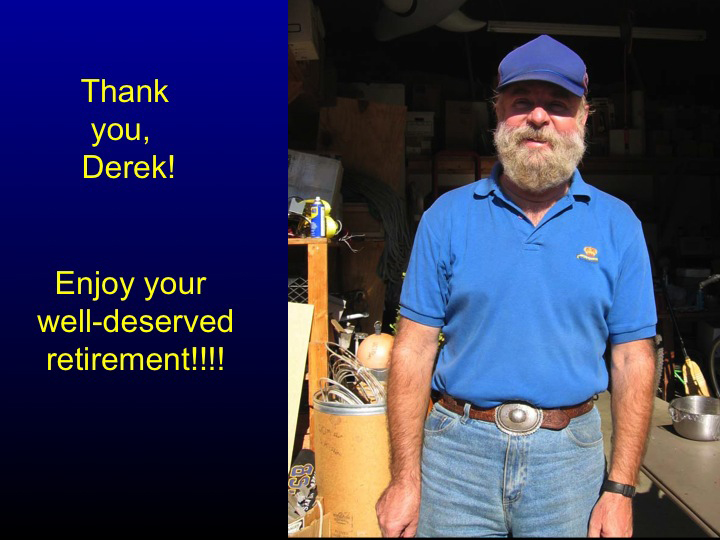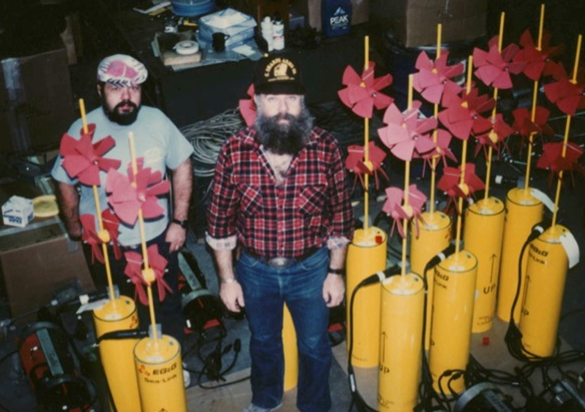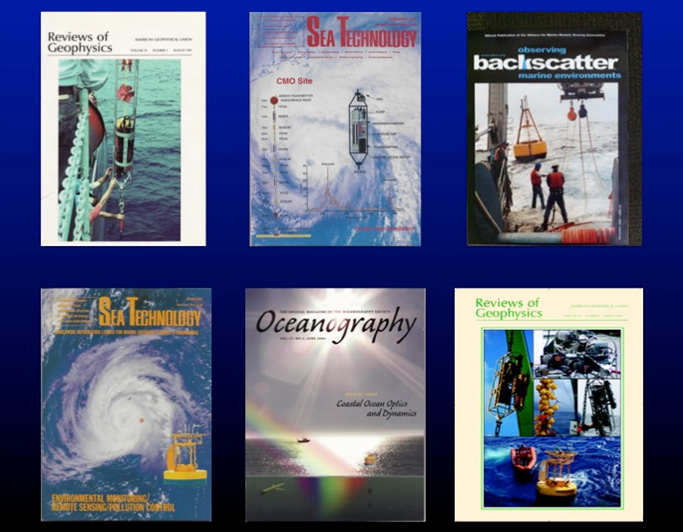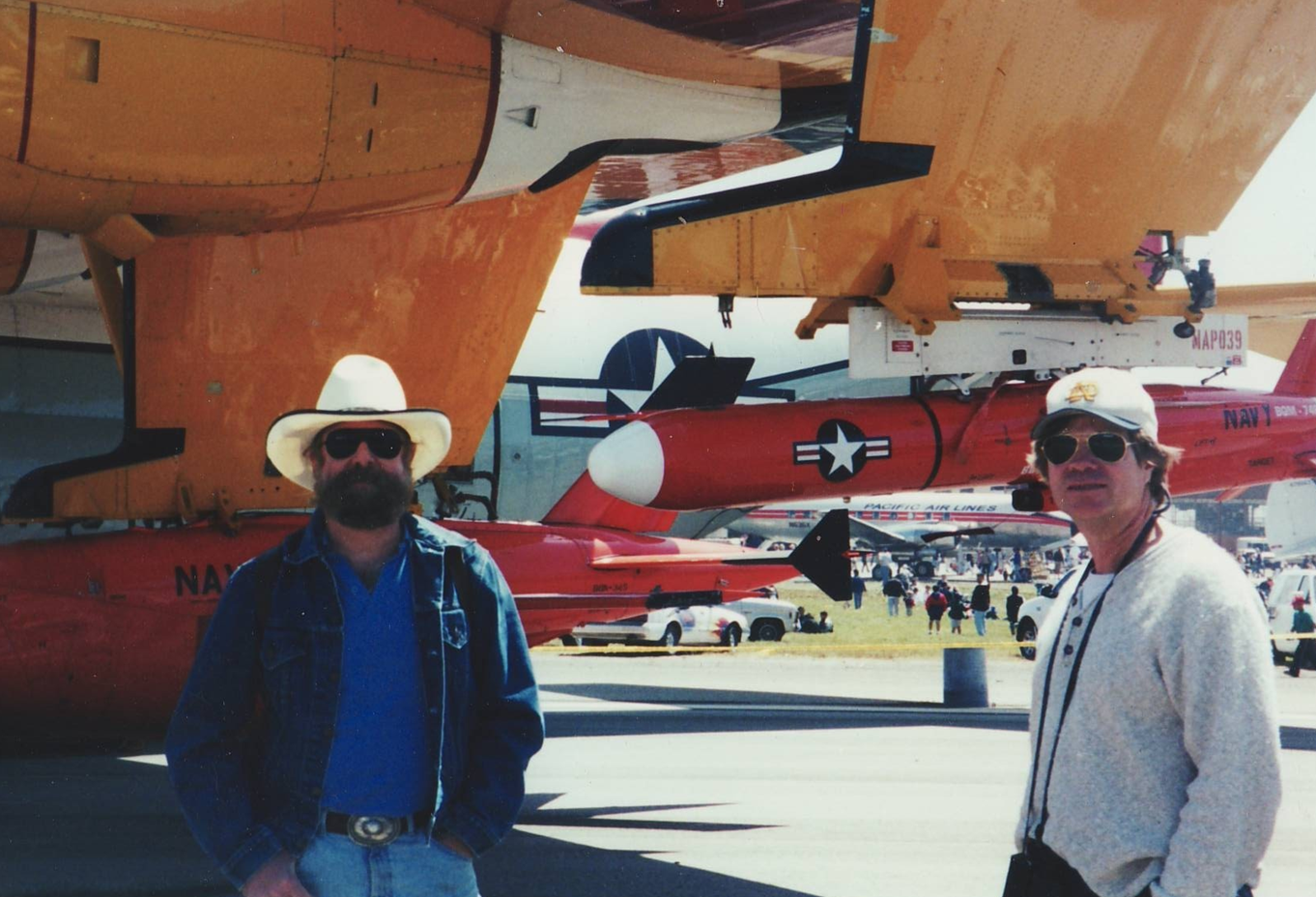After a remarkable 40-year career as a geophysical and oceanographic engineer, Derek Manov of the Ocean Physics Laboratory (OPL) recently retired. A farewell party held in honor of Derek and attended by many of Derek’s friends was held September 27, 2013.
Derek completed his B.S. degree at Cal State Northridge University and shortly thereafter was hired by the University of Southern California (USC) Department of Geological Sciences where he developed and deployed scientific instruments for 22 years. He worked with seismologists in developing new instrumentation and deploying them in the field. One of his major accomplishments was the invention of seismic sensors capable of detecting very small earthquakes. In particular, geophysicist Rachel Abercrombie needed a device that could spend months suspended deep underground in the San Bernardino Mountains listening for faint mini-earthquakes. In response, Derek designed a seismic instrument package to fit in a slender cylinder of titanium hardened to withstand high temperatures. Another of his instruments, designed and built almost 40 years ago, is still recording and sending back data from 4,700 feet beneath the Baldwin Hills.
In 1987, Derek switched from geophysical measurements to ocean science measurements as his primary focus when he joined Professor Tommy Dickey’s USC Ocean Physics Group (OPG). In 1996, Derek and Professor Dickey came to the UCSB Geography Department and formed the Ocean Physics Laboratory (OPL) at an off campus site on Los Carneros Road before moving to the UCSB campus within the past few years.
One of the early ocean engineering problems that required Derek’s expertise was to develop instrumentation that could simultaneously collect physical, chemical, biological, and optical data at minute-scale sampling intervals for several months at a time from ocean moorings. The Multi-Variable Moored System (MVMS) developed by Derek was very successful as it enabled collection of interdisciplinary data associated with a host of ocean processes, including currents and temperature structure as well as biogeochemical variability associated with hurricane forcing, ocean mesoscale eddies, inertial and internal gravity waves, and sediment resuspension.
Geographically, Derek’s instruments were deployed in the North Atlantic off Bermuda, south of Iceland, and on the New England shelf. In the Pacific, they were deployed off Japan, Canada, Hawaii, and California. Other memorable deployments took place in the Mediterranean and Arabian Seas. These collective observations were key to unraveling mysteries, such as how the upper ocean responds to hurricanes and how nutrients are uplifted into the euphotic layer in the cores of mesoscale eddies. Well over 100 field experiments were executed by the OPG and OPL, taking Derek to sea for most of these. Significantly, Derek often simultaneously managed three or more major ocean field experiments with annual lab budgets of well over a million dollars. The OPL led several national and international ocean projects, taking Derek to many meetings around the world. Well over 150 refereed publications resulted from Derek’s engineering work. Derek also successfully mentored visiting scientists, postdocs, and students from the US and other countries.
In 1994, USC reporter Eric Mankin wrote an apt summary description of Derek’s engineering skills and ingenuity: “All around the globe, from Bermuda to the Sea of Cortez, from Iceland to the Arabian Sea, from Palmdale to Hawaii, Derek Manov’s handiwork is on the job in difficult places. Some of his creations spend years buried deep inside the earth; others faithfully report from the depths of the ocean.”
Derek has always been modest and a model team player with an engaging dry sense of humor. While most here at UCSB know Derek only as an ocean engineer, he has many other skills and interests. For example, he was an aerobatic pilot in his younger years. Derek has also showed horses and has served as a crew member for historic tall ships and participated in Civil War re-enactments. He also is an antique expert, specializing in the Civil War Period. With all of these interests, Derek will hardly be bored in retirement. We thank Derek for his generosity and friendship. He will be greatly missed. We wish him a well-deserved happy retirement!
Editor’s note: Many thanks to Professor Tommy Dickey for providing this article, and kudos and best wishes to Derek!







